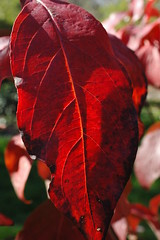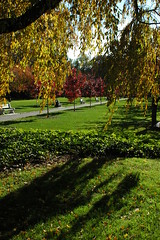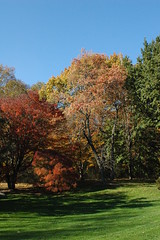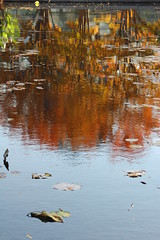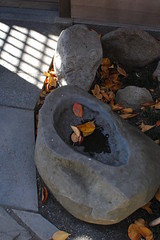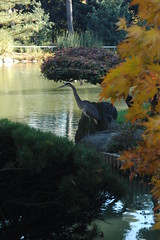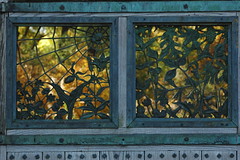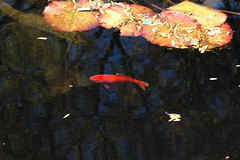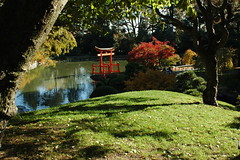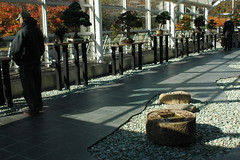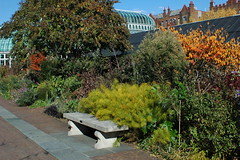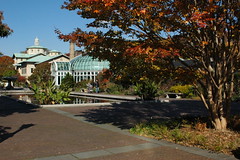Tag Archives: Bonsai
Fall in Miniature: BBG’s Bonsai in November
A yose (group-style) bonsai specimen of Acer palmatum, Japanese Maple, developed by Stanley Chinn currently on display at the Brooklyn Botanic Garden. Yose typically group multiple specimens of the same, or closely related species, in the same planting to simplify cultural requirements. Chinn’s masterful touch is the selection of cultivars with different fall foliage colors. This specimen is unusual in that there appear to be only two, rather than the typical three or some other odd number, of the trees in the grouping. 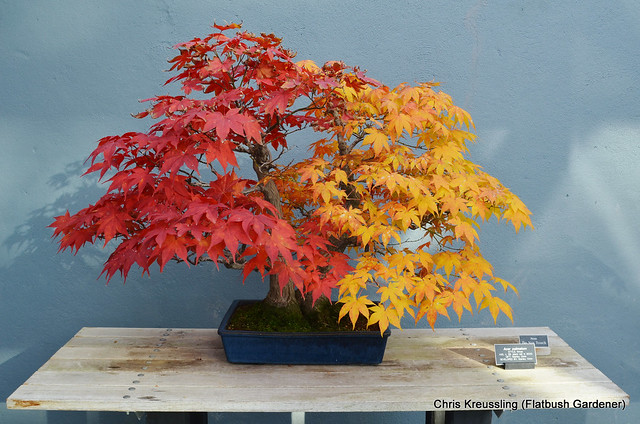
There is no better time of year to visit the Brooklyn Botanic Garden’s C. V. Starr Bonsai Museum than right now. Most of the trees on display are in peak fall foliage color. And while the wind has knocked the leaves off many of the trees on the grounds, the sheltered bonsai have been spared those indignities.
This season, they’ve placed an additional display table at the northern end of the greenhouse, opposite the entrance.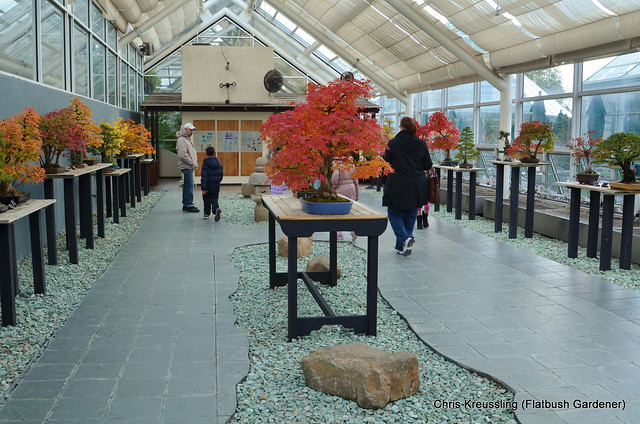
Slideshow
Related Content
Links
Fall Foliage at BBG’s Bonsai Museum
Detail of the fall foliage of a Moyogi (informal upright) specimen of Acer palmatum in BBG’s Bonsai Museum.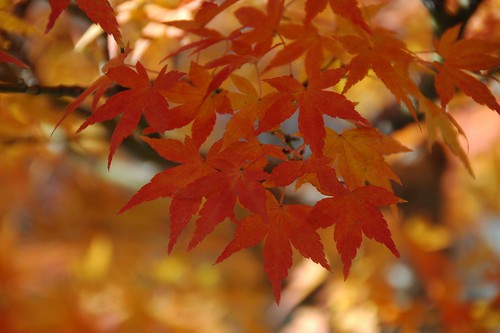
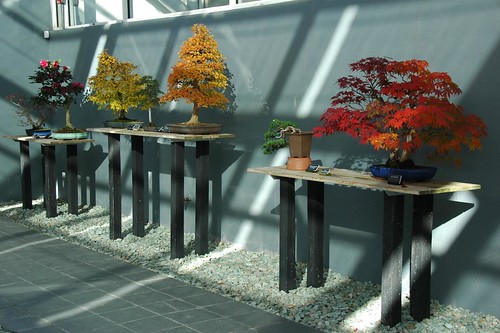
Detail of a Moyogi, informal upright style, specimen of the native Larix laricina, Tamarack.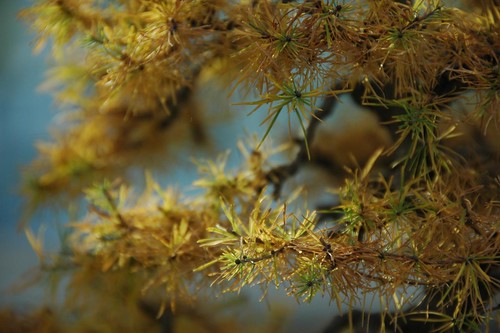
This Sekijoju, root-over-rock style, specimen of Acer buergerianum by the late Stanley Chinn is one of my favorite photographic subjects at BBG.
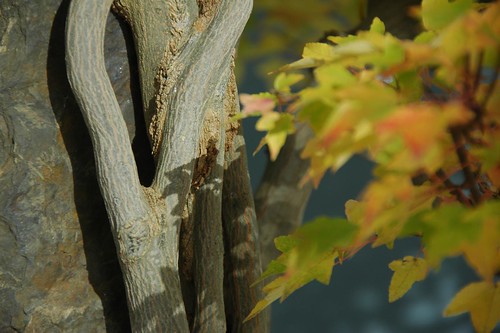
Slideshow
[goo.gl]
Related Content
Flickr photo set
My photos of BBG Bonsai (Flickr Collection)
Labels: Bonsai, Brooklyn Botanic Garden
Links
Field Trip: Brooklyn Botanic Garden
We went to the Brooklyn Botanic Garden today. I wanted to catch the fall foliage (there was lots), see if they had the book Defiant Gardens (they did!), and, with Takeo Shiota in mind, visit the Japanese Garden.
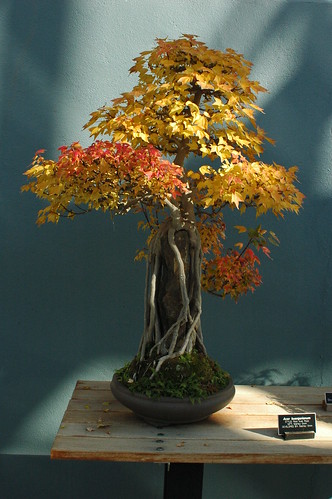 Bonsai of Acer buergerianum in the root over rock style by Stanley Chinn in the Bonsai Museum.
Bonsai of Acer buergerianum in the root over rock style by Stanley Chinn in the Bonsai Museum.
Here’s a sampling of a few of the photos I took today. Each photo in this post links to its Flickr page with a description. The title of this post is linked to the Flickr set containing these photos. There are many more photos from today’s visit there.
North Carolina Arboretum: 2 of 2, Bonsai Exhibition House
Bonsai, “Yoshimura Island,” American Hornbeam, Carpinus caroliniana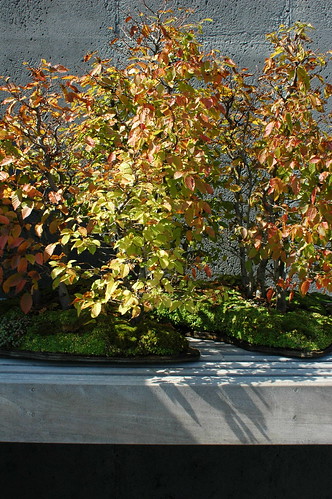
I’ve been to the Asheville area a couple of times over the past several years. I try to visit the North Carolina Arboretum each time I’m in the area, but I don’t always get the chance. On this visit, I was struck by the new Bonsai Exhibition House, which is across the courtyard from the Visitor Education Center, the main building on the site. If you find yourself anywhere in the Asheville area, and have any interest in plants or gardens, this should be a stop during your visit.
The design and layout of the “House” is impressive. All of the specimens are displayed outdoors, at least at this time of year. In past years, they’ve been available for viewing in one of the greenhouses, which is located about a mile down the road from the Visitor Center.
It’s really an outdoor garden demonstrating different classical Japanese and Chinese garden design principles, with explanatory signage along the way. There’s a winding wheelchair-accessible path which can be accessed from either the upper entrance, near the Visitor Center, or the lower entrance.

There are also walls with lots and lots of shelves and nooks for displaying the bonsai. The poured, formed concrete is a minimalist neutral grey, which serves as a non-distracting backdrop for the bonsai, highlighting their textures, colors, and forms.
Finally, the individual specimens are exemplary and exquisite, covering every form, from snags, to broad, fully-leaved single specimens, to groves, and even complete forests in miniature. One even benefited from a visiting “dragon” while we were there.
Links


